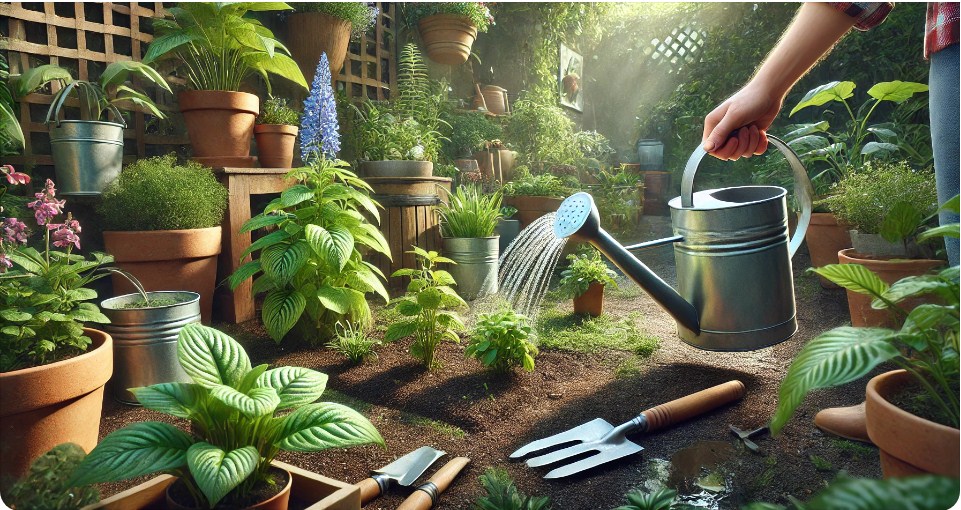Gardening is one of the most rewarding hobbies anyone can take up. Whether you have a backyard, a balcony, or even just a few pots on a windowsill, caring for plants connects us with nature and brings a sense of peace and accomplishment. However, for beginners, gardening can also come with a steep learning curve. It’s easy to make mistakes that can lead to stunted growth, dying plants, or even total garden failure. The good news is most of these common errors are avoidable. In this article, we’ll explore 10 of the most frequent gardening mistakes and how to steer clear of them.
1. Overwatering Plants
One of the most common mistakes new gardeners make is overwatering. While it may seem like more water equals healthier plants, too much moisture can actually drown plant roots, promote fungal diseases, and invite pests. Most plants prefer to dry out slightly between watering sessions. A good rule of thumb is to check the soil by sticking your finger in up to the first knuckle. If it feels dry, it’s time to water.
2. Not Knowing Your Zone
Many beginners overlook the importance of understanding their USDA Hardiness Zone or local climate. Each plant has a specific range of temperatures and conditions it can tolerate. Planting tropical flowers in a cold climate or trying to grow cool-season vegetables in hot summers will likely lead to failure. Always check plant tags and research whether a plant will thrive in your region.
3. Planting Too Closely
It’s tempting to squeeze in as many plants as possible to fill a garden bed quickly, but crowding leads to competition for nutrients, sunlight, and water. It also reduces airflow, increasing the risk of fungal diseases. Give each plant the space it needs to grow and spread naturally, according to the guidelines on the seed packet or plant label.
4. Ignoring Soil Quality
Soil is the foundation of any successful garden. Many beginners overlook it, focusing instead on the plants themselves. But poor soil can limit growth and health. Test your soil’s pH and nutrient content, and amend it with compost or organic matter if necessary. Healthy, well-draining soil rich in nutrients will support strong root systems and vibrant plants.
5. Choosing the Wrong Plants
Not all plants are easy to grow. Beginners often make the mistake of choosing high-maintenance or fussy plants that require specific care. Start with easy-to-grow varieties like marigolds, lettuce, mint, or succulents, depending on your goals. Gradually add more challenging species as you gain confidence and experience.
6. Planting at the Wrong Time
Timing is crucial in gardening. Some plants need to be sown in early spring, while others do better in late summer or fall. Planting too early can expose seeds or young plants to frost, while planting too late may not allow them enough time to mature. Use a planting calendar based on your region to determine the best time to sow or transplant.
7. Forgetting to Mulch
Mulch is a gardener’s best friend. It retains soil moisture, suppresses weeds, regulates temperature, and adds nutrients as it breaks down. Many beginners skip mulching, resulting in dry soil, more frequent watering, and increased weed problems. Organic mulches like straw, bark, or shredded leaves work well and are easy to apply.
8. Neglecting Regular Maintenance
Gardening isn’t a one-and-done task. Plants need ongoing care to stay healthy. Forgetting to weed, deadhead flowers, or check for pests can lead to bigger problems over time. Set aside a few minutes each day or week to walk through your garden, observe changes, and perform routine maintenance.
9. Failing to Label Plants
When you first plant seeds or seedlings, it’s easy to remember what’s where. But a few weeks later, things start to look the same—especially in a vegetable or herb garden. Without labels, you may accidentally pull up a desirable plant thinking it’s a weed, or forget the spacing and care needs of a particular variety. Use garden markers or recycled materials to label your plants clearly.
10. Expecting Instant Results
Gardening teaches patience, but many beginners expect quick results and get discouraged when progress seems slow. Plants take time to grow, bloom, and produce. Set realistic expectations and remember that gardening is a journey. Every failure is a learning opportunity, and with persistence, you’ll see success bloom over time.
Final Thoughts: Growing Through Mistakes
Making mistakes is part of the learning process, and even experienced gardeners encounter setbacks from time to time. The key is to learn from these experiences and keep going. Start small, observe your plants regularly, and don’t be afraid to experiment. With time, your garden will reflect not just the plants you’ve nurtured but the gardener you’ve become.
